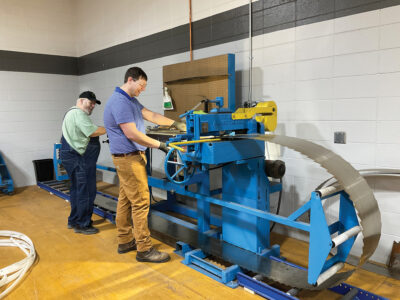National Association of Home Builders’ Chief Economist Shares Insights

By Dr. Robert Dietz
Chief Economist and Senior
Vice President, NAHB
Washington, DC
www.nahb.org
email: rdietz@nahb.org
Twitter: @dietz_econ
Blog: eyeonhousing.org
The U.S. economy contracted at its steepest pace since the Great Depression in the second quarter of 2020, as a result of the widespread shutdowns across the country due to COVID-19. In the following quarter, led by the gradual reopening of business and revitalized spending activity, U.S. Gross Domestic Product (GDP) rebounded at a record 33.1 percent annualized pace. The U.S. economy grew at an annualized rate of 4 percent in the fourth quarter and NAHB is forecasting an annual growth rate of 3.6 percent in 2021. With a recovering economy and renewed interest in housing, the residential sector will lead the economic recovery.
Though the pandemic resulted in a record 20.5 million jobs being lost in April, 12.3 million new jobs have been created since May and the unemployment rate declined to 6.7 percent in December. The improvements for the past seven months reflect that the economy is recovering from the pandemic, albeit gradually. And while broad-based economic distress continues, we expect the unemployment rate to fall back to approximately 5.0 percent by the end of 2021.
Meanwhile, the Federal Reserve pledged to keep interest rates near zero and will likely not raise interest rates until the economy has recovered and the inflation rate reaches 2.0 percent. These economic conditions are not likely to be met until 2022 or beyond, indicating accommodative monetary policy that will support housing, home building and the overall economy for years to come. The 30-year fixed mortgage rate is now at record low levels, and we expect mortgage rates to stabilize around 3.25 percent due to Fed actions in the medium-term.
“The COVID-19 pandemic not only shut down the economy but changed housing preferences. The NAHB Home Building Geography Index (HBGI) found that residential construction activity expanded at a more rapid pace in lower density markets, such as smaller cities and rural areas since the first quarter of 2020, and this suburban shift continued in the third quarter. This change is expected to continue on a partial basis in the post-vaccine economy.”
Dr. Robert Dietz
While the housing market was hit hard by the economic shutdown during the spring, it has seen a robust rebound and record-breaking growth after a gradual reopening of the economy. Due to low mortgage interest rates, a renewed focus on the importance of home, an evolving geography of housing demand and a lack of inventory, the housing sector has been a bright spot for the economy. As measured by the NAHB/Wells Fargo Housing Market Index, builder confidence hit an all-time high of 90 in November and remained in the mid- to high 80’s in December and January.
The COVID-19 pandemic not only shut down the economy but changed housing preferences. The NAHB Home Building Geography Index (HBGI) found that residential construction activity expanded at a more rapid pace in lower density markets, such as smaller cities and rural areas since the first quarter of 2020, and this suburban shift continued in the third quarter. This change is expected to continue on a partial basis in the post-vaccine economy.
Benefiting from low interest rates, low resale inventory and a changing geography of housing demand, single family construction is now at the highest pace since September 2006 and is expected to grow moderately over the next two years.
From a rental perspective, we expect multifamily construction to decline in 2021 before stabilizing in 2022, although apartment construction will see strength in lower density markets.
Given that the housing market entered the recession underbuilt, additional construction activity will be required as low interest rates and the economic recovery continue to fuel housing demand. The imbalance of supply and demand caused by low existing and new home inventories and strong demand for housing caused sales to outpace construction starts by a historic margin in the Fall. This imbalance between housing demand and supply could hamper future sales by driving up home prices and restraining affordability.
Meanwhile, builders continue to deal with affordability headwinds on the supply-side front, including the cost and availability of building materials, especially lumber, and rising regulatory costs. Such cost increases could impede more robust construction growth.









